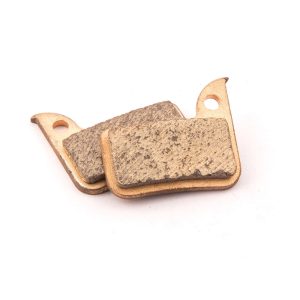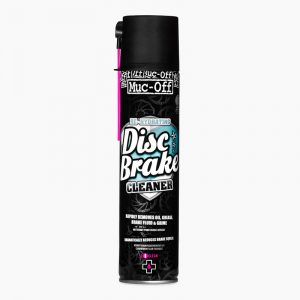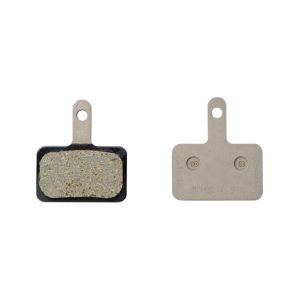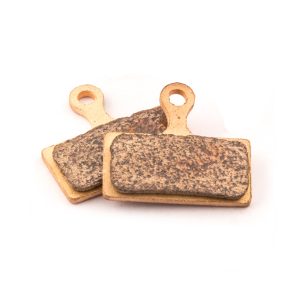Large Brake Pads
Large brake pads are dedicated to our heaviest-duty brakes, mostly seen on enduro, downhill, or e-bikes. The models that the large pads cover are:
- CODE Stealth Ultimate (A1) 2023+, CODE Stealth Silver (A1) 2023+, Code Stealth Bronze (2023+)
- DB8 (A1) 2021+
- Code R (B1) , RS (B1) or RSC (A1) 2018+
- Guide RE (A1) / G2 RE(A1) 2018+
- Heavy Duty | Sintered Copper | 00.5315.023.010 (OEM CODE & Guide RE Pad compound)
Want to learn more about pad compounds? Scroll down.
**OEM – Original Equipment Manufacturer – This is the brake pad that will come in your brakes from new.
WANTING TO CHANGE COMPOUND?
Now, if you are looking at changing up those brake pads, we can help explain what a new compound will perform like on the road or trail. The pad compound relates to the material that contacts the rotor. Compounds generally come in two flavors:
- Sintered: Pad material contains pieces of metal within the compound
- Organic: Pad material contains various organic materials (non-metallic)
During the bed-in process of hydraulic disc brakes, a thin layer of brake pad material is transferred onto the rotor. This friction between the two surfaces enables powerful braking. When changing brake pad compounds, it is crucial to replace the rotors as well to achieve optimal performance with your hydraulic disc brakes.
Installation
Once you have determined the correct shape and compound, it is time to install the new brake pads. Below are direct links to our brake pad installation video and break bed-in. Be sure to review the Disc Brake Pad Replacement User Manual for complete instructions, but we also have some careful considerations below;
- Oil from your hands can contaminate surfaces. Don’t touch the braking surface of the pad or the rotor, as oil from your hands can contaminate the pad and reduce the braking performance.
- Don’t forget to push your pistons back! Your old brake pads here are your friend, so don’t throw them out. Use the old pads and a flathead screwdriver or tire lever to help push the pistons back into the caliper. This will reduce any risk of damage to the pistons as the pads will protect them. As your pads wear out, the piston advances to maintain the same lever feel. If you don’t push the pistons back into the caliper, it will be very difficult to install the new pads and even harder to install the wheel with the rotor. If you get the wheel in, the lever will have limited throw.
- Make sure you replace the pad retention pin and e-clip. Forgetting to install the pin would result in the pads coming out of the caliper when you need them most. The e-clip is a necessary secondary safety measure critical for rider safety.
- You will need to perform a piston advance before you ride. The SRAM disc brake and shifter manual will run you through the use of pad spacers and the steps to advance your piston with pads installed to the desired location for optimal lever feel. This can be found in our MTB Disc Brakes and Shifters User Manual
- Brake bed-in is critical for new brake systems, pads, and rotors. Bed-in is a quick but critical process that ensures you get the best performance out of your brake system. Skipping this step can lead to poor performance, noise, and inconsistent braking. Check out the Bed-In Process video below:







